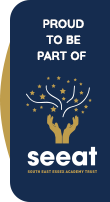Diversity
Our Mission
We create an inclusive and nurturing environment, where our pupils benefit from a high-quality academic, social and emotional education, preparing them to be respectful, empathetic citizens, equipped to participate in and contribute to the rapidly changing world.
Our Values
We are……
Resilient
Independent
Creative
Inquisitive
Our Vision
At Hadleigh Junior School our vision is built around three key elements of Experiences, Growth Mind-set and Mastery, which are underpinned by our core values: we are….Resilient, Independent, Creative and Inquisitive.
Aims
Our school aims to meet its obligations under the public sector equality duty by having due regard for the need to:
- Eliminate discrimination and other conduct that is prohibited by the Equality Act 2010
- Advance equality of opportunity between people who share a protected characteristic and people who do not share it
- Foster good relations across all characteristics – between people who share a protected characteristic and people who do not share it
What is the Public Sector Equality Duty?
The Equality Act 2010 introduced a single, general duty for public bodies, including schools, and which extends to all ‘protected characteristics.’
- race
- disability
- sex
- age
- religion or belief
- sexual orientation
- pregnancy and maternity
- gender reassignment
- marriage and civil partnership
Legislation and guidance
The Equality Act 2010, which introduced the public sector equality duty and protects people from discrimination
The Equality Act 2010 (Specific Duties) Regulations 2011, which require schools to publish information to demonstrate how they are complying with the public sector equality duty and to publish equality objectives
- The Department for Education (DfE) guidance: The Equality Act 2010 and schools.
We aim to promote pupils’ spiritual, moral, social and cultural development, with special emphasis on promoting equality and diversity, and eradicating prejudicial incidents for pupils and staff. Our school is committed to not only eliminating discrimination, but also increasing understanding and appreciation of diversity.
Aims to Eradicate Discrimination
We aim to create a prejudice-free environment, where children, staff and visitors feel safe and valued. This environment will be achieved by staff supporting children to:
- Be respectful at all times
- Always treating all members of the school community fairly
- Developing an understanding of diversity and the benefits it brings
- Adopting an inclusive attitude
- Adopting an inclusive and diverse curriculum that is accessible to all
- Encouraging compassion and open-mindedness
We are committed to having a broad, balanced and diverse curriculum. We believe that our pupils should be exposed to ideas and concepts that may challenge their understanding, to help ensure that pupils learn to become more accepting and inclusive of others.
We promote the 9 protected characteristics through:
- Our school core values
- Our school behaviour policy
- Conscious role modelling by all adults in the school community
- Active engagement and communication with parents and carers
- Assemblies
- Discussion within curriculum subjects, taking a cross-curricular approach
- Promoting articulation by building appropriate language and communication skills
- Personal, Social, Health and Education (PSHE) sessions
- Religious Education (RE) lessons
- Sporting, Art and Cultural Events
- Pupil Voice
- Educational visits
- Real-life learning outside the classroom
- Guest speakers
- Developing links with local, national and international communities
- Extra-curricular activities, after-school clubs, charity work and work within the local community
Dealing with prejudice
We do not tolerate any form of prejudice-related incident. Whether direct or indirect, we treat discrimination against all members of our school with the utmost seriousness, taking immediate and appropriate action.
Roles and responsibilities
Our pupils are taught to be:
- respectful and tolerant of others
- celebratory of cultural diversity
- determined to achieve mastery across the curriculum and extra-curricular opportunities
- inclusive of others at all times
- aware of what constitutes discriminatory behaviour
- knowledgeable of strategies to keep themselves and others safe.
The Governing body will:
- Ensure that the school sets appropriate equality information and objectives that are published
- delegate responsibility for monitoring the achievement of the objectives on a daily basis to the Head of School
The Head of School will
- promote knowledge and understanding of the equality objectives amongst staff and pupils
- monitor success in achieving the objectives and report back to governors
- ensure there is a continuous awareness of the nine protected characteristics
The school staff will:
- promote diversity, inclusion and equality at all times through lessons and discussions with pupils, staff and visitors
- plan a broad, diverse and balanced curriculum for our pupils
- lead by example
Equality and Dignity in the Workplace
We do not discriminate against anyone due to their:
- Age
- Disability
- Gender reassignment
- Marital or civil partner status
- Pregnancy or maternity
- Race
- Religion or belief
- Sex
- Sexual orientation
How Does Hadleigh Junior School Comply with the Public Sector Equality Duty?
We have a range of policies which make explicit the school’s commitment to actively promoting equality of opportunity for all. The main policies that deal with equality of opportunity are:
- Accessibility Policy
- Equality and Diversity Policy
- SEND Policy
- Behaviour Policy
- Anti-bullying Policy
- Religious Education Policy
- Relationships and Health Education Policy
- Curriculum Intent
Diversity Curriculum Map
|
|
Year 3 |
Year 4 |
Year 5 |
Year 6 |
|
School Rules |
Our number one rule is: ‘We respect and care for one another.’ |
|||
|
English |
Christmasaurus - Tom Fletcher Celebrate difference - disability, bereavement, bullying The Butterfly Lion - Micheal Morpurgo Boy – lion cub. Goes to boarding school Friendship Stig of the Dump - Clive King Different lives – link to Stone age topic. |
The Roman News Diary of a Roman Girl Wind in the Willows - Kenneth Grahame Graphic novel for all to access - Animals, life cycles Holes - Louis Sachar Includes references to racism, equality, corporal punishment |
George and the Secret Key to the Universe - Stephen Hawking Celebrates overcoming adversity to succeed. Mae amongst the stars Space – Mae Jemison first black women in space How To Train a Dragon -Cressida Cowell Celebrates the different types of strengths that people may have - Journey to the River Sea Eva Ibbotson Follows the life of orphan Maia Set in Brazil |
Goodnight Mr Tom - Michelle Magorian WW2 Evacuee Poverty Child abuse and relocation London Eye Mystery Siobhan Dowd Differences – autistic main character Romeo and Juliet - Shakespeare Discrimination and prejudice
|
|
Maths |
Power maths resources show images of a range of protected characteristics Super movers videos from BBC show a range of characteristics Expectation that all children are able to achieve – it's not a ‘boys’ subject Have invited speakers for enterprise week from a diverse range of people (Asif’s pharmacy, Kelsie from Olympus) |
|||
|
Science |
Science clips and discussion about scientists to highlight/show a range of characteristics. Careful approach to promote science for all. |
|||
|
PSHE |
Marriage and being pregnant and sexual orientation - Celebrating Difference Piece 1: Families Race – celebrating difference Piece 2: Families Sex – changing me Piece 5: Family Stereotypes
RSE WEEK: - Pregnancy - Marriage |
Age – celebrating difference Piece 1: Judging by Appearance Piece 2: Understanding Influences Disability – celebrating difference Piece 1: Judging by Appearances Piece 6: Celebrating Differences: How We Look Sex – changing me Piece 1: Judging by Appearances Sexual orientation – relationships Piece 5: Girlfriends and Boyfriends RSE WEEK: - Pregnancy |
Race and religion – celebrating difference Piece 1: Different Cultures Piece 2: Racism Sexual orientation – celebrating difference Age 9-10 Piece 3: Rumours and Name Calling Age 9-10 Piece 4: Types of Bullying RSE WEEK: - Sexual orientation - Marriage |
Age - celebrating difference Piece 2: Understanding Difference Piece 3: Power Struggles Marriage, disability, race, religion and being pregnant, sex – celebrating difference Piece 2: Understanding Difference Disability - Celebrating difference Piece 5 Sexual orientation – changing me Piece 4: Boyfriends and girlfriends RSE WEEK: - Sexual orientation - Pregnancy |
|
SMSC |
Humanist speaker in assembly Mock election week Charity days – Have a Heart for HARP, Don Sheppard, United in Kind. Thinking about those less fortunate than us Black history month – challenging stereotypes Y5 National Archives Black Victorians online workshop UK Parliament week - Y4 and Y6 UK Parliament workshops |
|||
|
RE |
Humanist assembly Jewish workshop Comparing Christianity to Judaism |
Humanist assembly Comparing Christianity to Hinduism and Judaism |
Humanist assembly Buddhist workshop Comparing Christianity to Buddhism and Sikhism |
Humanist assembly Muslim workshop Humanist workshop Comparing Christianity to all the main world religions |
|
PE Curriculum |
Complete PE ‘Knowledge organisers’ for each PE unit focus on a wide variety of inspirational people representing the protective characteristics. Tops cards include adaptations for physical disabilities and ways to make PE lessons accessible for all children. Use videos of children/people with a diverse range of ethnicity, cultural back grounds eg – cricket videos and a focus on how cricket is a major sport in India.
All PE lessons have ways the lessons can be adapted to suit all physical needs.
Age-appropriate equipment – cricket bats and size 4 footballs and netballs etc. |
Complete PE ‘Knowledge organisers’ for each PE unit focus on a wide variety of inspirational people representing the protective characteristics. Tops cards include adaptations for physical disabilities and ways to make PE lessons accessible for all children. A focus on Michael Jordan in Basketball and various basketball skills performing groups. All PE lessons have ways the lessons can be adapted to suit all physical needs. Dance: Holes unit – explores origins of R ‘n’ B music. Tag Rugby unit: looked at the Haka performed by the ‘All Blacks’ team when playing rugby and discussed its background and history. Also discussed Gareth Thomas – Welsh Rugby player who came out as gay once he had retired from professional rugby. During Football – discussed football hooliganism and how there have been racist incidents in the past. In athletics a focus on Dina Asher Smith – the fastest GB female runner. Age-appropriate equipment – cricket bats and size 4 footballs and netballs etc.
|
Complete PE ‘Knowledge organisers’ for each PE unit focus on a wide variety of inspirational people representing the protective characteristics. Tops cards include adaptations for physical disabilities and ways to make PE lessons accessible for all children.
Boxercise: Champions online platform has videos of children from a range of cultural and racial backgrounds demonstrating the movements. A rainforest day explores Zumba – lots of Latin-American inspired dance moves and music. Children are also taught about ‘Capoeira’ a Brazilian martial art created by slaves. Children learn about its origins and some of the key movements. Cool Core unit: Explores Yoga, pilates and their origins. Age-appropriate equipment – cricket bats and size 4 footballs and netballs etc.
|
Complete PE ‘Knowledge organisers’ for each PE unit focus on a wide variety of inspirational people representing the protective characteristics. Tops cards include adaptations for physical disabilities and ways to make PE lessons accessible for all children.
WW2 Dance unit: explores many different styles of music and their origins.
A focus on Mo Farah as inspiration for long distance running. Age-appropriate equipment – cricket bats and size 4 footballs and netballs etc.
|
|
PE Extra curricular |
Our house teams are named after inspirational Olympians and Paralympians. Celebrating the women’s football World Cup with a competition and allowing classes to watch England’s first match during school and allow children to wear football kits – discussed that women were actually banned from playing football in leagues from 1921 until 1970. 15 SEND children from the school represented the school at a Paralympics competition, won the Boccia tournament and reached the county finals. Dance club: Explores many genres of music and artists. 10@10 – Les Mills classes online often feature a pregnant instructor showing that pregnant women can still work out safely, wide range of instructors. |
|||
|
Art Art by its very nature is inclusive and accessible to all students, irrespective of ability/disabilities/gender etc. All pupils have access to entire Art curriculum. In each year group we study of large range of artists from different cultures, historical periods and backgrounds and genre. During Art appreciation we celebrate individual viewpoints and encourage discussion of personal ideas, likes/dislikes.
Whole school collaboration celebrating individuals based on work of artist ThankyouX
|
Yr 3 Compare different artist works and give viewpoint. Explore different people's perception and idea of what art is. Study art from various cultural backgrounds/religions and historical periods such as Egyptians, Stone Age.
|
Yr 4 Further study of artists, increasing range of diversity/genre. Roman art, Abstract, Impressionism. Local area and study of Hadleigh Castle, where they come from.
|
Yr 5 Studying Viking art to Pop art. Year 5 are part of exhibition collaboration with Westcliff High School for girls and joint works with year 9.
|
Yr 6 Emotion and politics in Art, looking at Banksy/Street artists. Self-expression. Southend City Jam. World War two propaganda posters. Asian art/ Chinese, Willow pattern plate.
|
|
Design Technology All projects made for purpose and user. Diverse needs/interests/appropriateness considered for each project. Food tech. Diversity celebrated with study of produce from around the world. Use of inventors and makers website to introduce a diverse range of architects, scientists and designers. |
Year 3
Levers and linkages – Product design for a religious festival/ cultural reference. Thinking of symbols relevant to that religion. Parental involvement sessions.
Food – Multi-cultural cuisine. To investigate food sources. To discuss taste and textures of food. Food preference, allergies/diverse needs/ religious requirements/ Individual choices and preference addressed vegan/halal. Market research carried out within year group before product made.
|
Year 4 Sewing – To select materials and components according to their functional properties and aesthetic qualities. Product made and designed for the needs of a particular character from Wind in the Willows. Aesthetics and opinions shared. Own views and ideas encouraged in evaluations. Electrical circuit – Food – Multi-cultural cuisine. To investigate food sources. To discuss taste and textures of food. Food preference, allergies/diverse needs/ religious requirements/ Individual choices and preference addressed vegan/halal. Market research carried out within year group before product made.
|
Year 5 Mechanisms – To understand electrical and mechanical pulley systems. Mars Rover project. To evaluate (did the product meet the design criteria?) International space race. Link to Mae Jemison (First African American female in space). Parental engagement.
Sewing – Cultural heritage. To explain how a product will appeal to specific audiences. Food – Multi-cultural cuisine. To investigate food sources. To discuss taste and textures of food. Food preference, allergies/diverse needs/ religious requirements/ Individual choices and preference addressed vegan/halal. Market research carried out within year group before product made.
|
Year 6 3D structures - Effects and consequences of war . Making of Anderson shelter Food - Multi-cultural cuisine. To investigate food sources. To discuss taste and textures of food. Food preference, allergies/diverse needs/ religious requirements/ Individual choices and preference addressed vegan/halal. Market research carried out within year group before product made.
|
|
History |
Stone Age (Cheddar Man) do children presume that Stone Age people were white? Show migration of people across continents
Egyptians – focus on a female pharaoh (Hatshepsut) alongside Tutankhamun
|
Romans (show diverse range of emperors – Septimius Severus – north African |
Difference between Roman and Greek cultures - status of women. |
WW2 – diverse cultures/religion - WW2 Kindertransport
Islamic Civilization – different religious faiths/cultures
|
|
Geography |
Locational and place knowledge - discuss what is Britishness? Demographic of different cities. London/Edinburgh |
|
Different cultures South American/Amazonian |
Demographic of local area Comparison of impact of earthquakes, flooding, volcanic eruptions on different communities in the world.
|
|
Computing |
Topic 1 Using Technology – how assistive technology supports people with various disabilities Topic 2 Communicate and Collaborate – the Project Evolve knowledge maps have a diverse range of people shown and the text to speech reader speaks with a corresponding vocal dialect based on the character Topic 3 Programming and Control – video tutorials on Hour of Code have a diverse range of people presenting them coding Topic 4 – year 4 are taught the difference between personal data and sensitive personal data (covering protected characteristics) when looking at Data Protection laws and databases Age restrictions of games, apps and websites are discussed, which is teaching children that sometimes there is a need to find out their age and the computer make decisions based upon it British Values display is tweaked to be related to computing in particular Famous people in computing display shows a diverse range of people Year 6 cover the Digital Divide Metacognition display shows a diverse range of people Teacher has read a computing magazine dedicated to this topic with examples https://helloworld.raspberrypi.org/issues/11/pdf and website on diversity within computing: https://cs4fn.blog/diversity/ |
|||
|
French |
Learning how to use a Modern Foreign language enables access to ideas and experiences from a wide range of people, communities and cultures. In Year 3, the first lesson opens discussion on benefits of learning a MFL, including cultural understanding. French is spoken in many countries around the world, including Africa, Canada, Asia and the Caribbean. Children with a second language at home are encouraged to share their experience and this is celebrated – benefits of learning ANY language at an early age to help with second language acquisition. Special festivities in France and French-speaking countries are learned about throughout the year – including April Fool’s, Christmas, Easter, 14 July. Differences and similarities are discussed, increasing understanding of cultural diversity. Pictures depicting people aim to show a diverse range of people. Video clips such as those on BBC Bitesize show children in French speaking countries around the world. French is a grammatically gendered language. As we explore this more in Year 6 we are able to touch on how some French speakers are trying to introduce gender neutral language – e.g. ami.e.s |
|||
|
Music |
Assemblies: Introductory music for assembly showcases black and female composers and those with disabilities with information to read about their achievements as well as listening to their music (e.g. Clara Shumann, Lili Boulanger, Joseph Chevalier St Georges, Samuel Coleridge Taylor, John Stanley) Song choices here and for assemblies are often chosen specifically because they promote positive values (e.g. songs about friendship ‘Count on Me’ and positivity ‘We Are Here Together’) Choir and orchestra: Songs and pieces are chosen to include works by black and female composers. Song choices here and for assemblies are often chosen specifically because they promote positive values. We often include BSL in our assemblies when teaching songs to pupils to promote understanding of and respect for the deaf community. Schemes of Work: Where topics are based on a particular style of music these include the music of the BAME communities (e.g. Egyptian Doumbek drumming in yr 3, Rhythms of the world (West Africa, Brazil) in yr 6, Reggae music in yr 6) Resources: In all topics musical examples and videos used are scrutinised to ensure that they purposely include a variety of musicians of different ages, gender and from the BAME community and those with disabilities. (for example in the topic about the orchestra musicians of different ages, genders and ethnicities are featured in video examples playing their instruments; in the Egyptian drumming topic Sarit Hadid – a female doumbek drummer – is featured) Teaching: When learning about music, especially from the past, teaching will include specific reference to black history and tackle stereotyping and prejudice (e.g. in WWII SOW pupils find out how ‘swing’ music was banned by the Nazi party and the important role of black musicians such as Duke Ellington and Count Basie, questioning why groups of musicians were often all white or all black; when learning about Samba music the origins of this style are discussed) Inclusion: Pupils with physical disabilities are given appropriate equipment to maximise their access to music. All pupils are offered access to extra-curricular opportunities. |
|||
|
British Values |
The fundamental British Values are taught each year through PSHE lessons, assemblies and class discussions. |
|||










